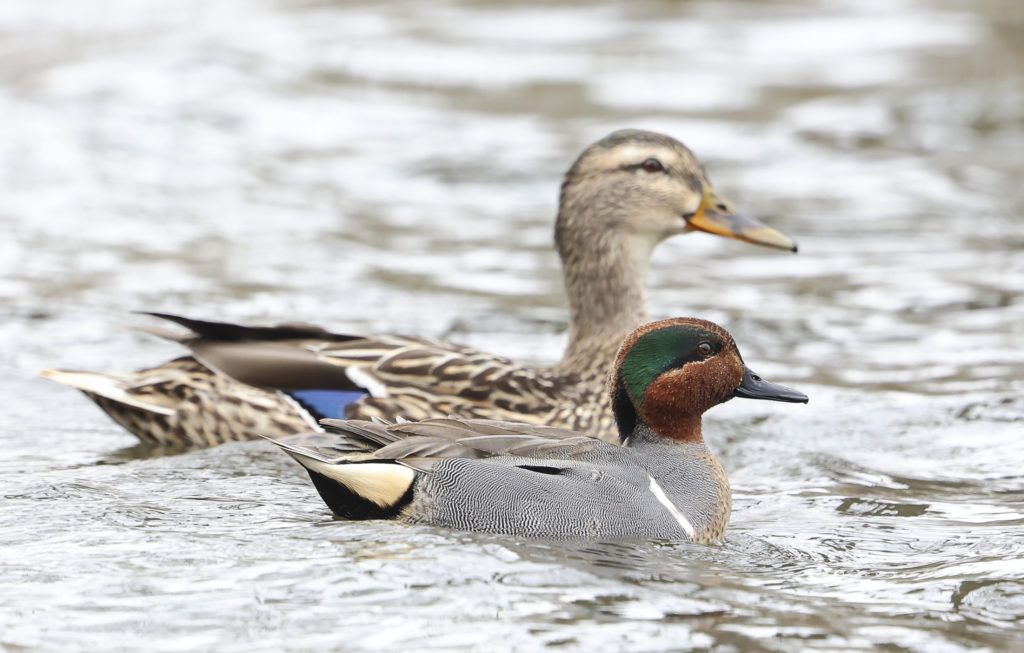Creature Feature

A Cross-Species Love Story
By Wayne Bierbaum
I recently took a trip to Loch Raven Reservoir to visit a most unusual couple.
Local birders were reporting that the smallest dabbling duck, a male green-winged teal was courting one of the largest around, a female mallard. The male reportedly was actively protecting the female, chasing away rival males. He also seemed to lead her to food and where to rest at night. It was reported that they were seen mating.
I don’t routinely go on rare wild bird chases but because I recognized the pair’s exact location, I took the chance and went for the hour drive.
The amorous pair was incredibly easy to find. In fact, as soon as I walked to the lakeshore, the male green-winged teal swam towards me, followed by the female mallard. The teal was remarkably good-looking and seemed to expect food, which I didn’t bring. He did protect the female and would frequently rush to her side. The size difference was noticeable.
Dabbing ducks are also called puddle ducks. They do not dive underwater to feed but surface feed or tilt over to feed as deep as their neck stretch lets them. Most dabbling ducks have similar body structures and bills and generally feed on the same type of food. They are similar enough to be able to breed across species.
Ducks Unlimited reports crossbreeding occurs more often in waterfowl than any other bird family. They list a large number of hybrid ducks and the most frequent bird involved is the mallard, as mallards are very aggressive breeders. There is concern that fertile hybrid offspring will dilute pure gene pools and may alter bird habits and migrations. A hybrid bird may not know which set of genes to follow.
The teal-mallard combination is very rare; with the mallard-black duck being the most common. I have witnessed diving duck hybrids, specifically, a canvasback-redhead combination.
The mallard-black duck combination is concerning as the two species have considerable overlapping territory and look fairly similar. The Hawaiian duck is a rare species that is threatened with extinction by breeding with invasive aggressive mallards. The southern U.S. mottled ducks are also at risk.
The two “love birds” I recently met may successfully produce offspring and I would assume that they would be large like their mallard mother. I can only hope that any offspring would hang around with mallards and not continue to mate with green-winged teals.
